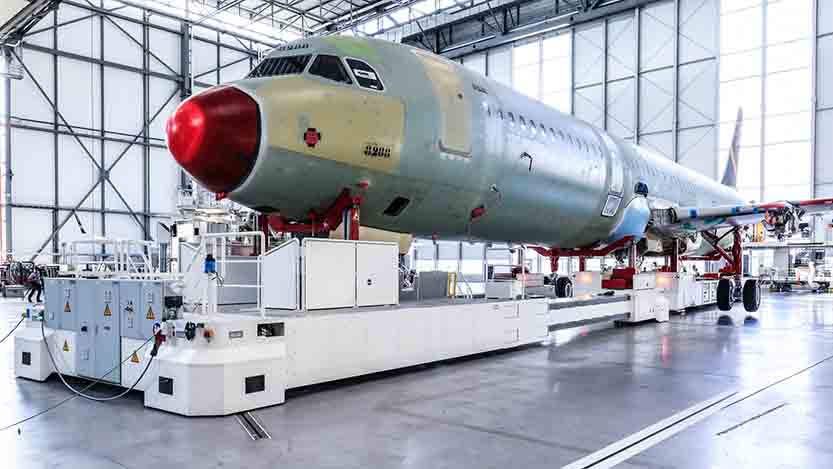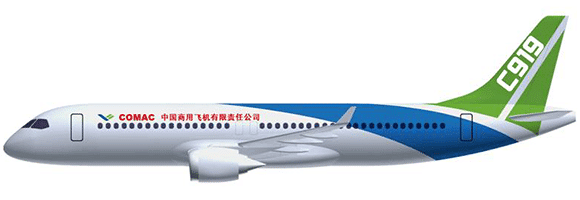Aviation
Is China’s COMAC C919 better than B737max and A319neo ?

Is China’s COMAC C919 better than B737max and A319neo ?
Its been decades since Airbus and Boeing rules the sky, but ever since the Commercial Aircraft Corporation of China (COMAC) presented the C919 in 2008. Comparisons poses future competition with Airbus’s A319neo and Boeing’s 737 MAX aircraft, families with narrow-body. The trio of aircraft competes for the same market, carrying between 160 & 200 passengers on short and medium-haul.
[adinserter block="1"]
China’s Aviation Market is the world’s Largest aviation market. Both Airbus and Boeing sell heavily to the country and China doesn’t want to rely on western countries’ aircraft technology. The Aviation industry is worth globally around $700 Billion. In 2020 Airbus and Boeing shared a combined $150 Billion in revenue, so who doesn’t want a share?
[adinserter block=”1″]
The aviation industry took a heavy hit in 2020, aircraft got grounded, flights got canceled, result, aircraft are sent to graveyards, with no hope to fly soon. An enormous amount of loss to the airline industry. but China is planning to sell its homemade aircraft to developing airlines and regions like Africa, where it can offer for much cheaper than Airbus and Boeing.
Boeing 737 MAX, which was restricted to flying since 2019, and China was the first to ground. This was enough for China to wander into other options, hence China brought its own product. 737 MAX recently got FAA’s approval to fly again, many countries waved flags for 737 MAX except China. China has claimed it wants to conduct final testing of its own before re-certifying the MAX. The reason behind this might be safety or it could be to enforce its own homemade aircraft.
[adinserter block=”1″]
Read more: 12 things to know about Airbus A320 family
With the recent agreement between Chinese aviation lessor China Aircraft Leasing Corporation (CALC) and Boeing on March 25th, CALC has slashed its orders for the Boeing 737 MAX by 26 planes. The initial order was for 50 planes, CALC increased it to 92, and now it’s been down to 66 planes.
Read more : Top 10 world’s busiest airport revealed
[adinserter block=”1″]
China is producing more different aircraft models to compete with Airbus and Boeing, looking at the statistic, Boeing has the upper hand because the high-technology innovation in Boeing is always mesmerizing and it kept away from competitors.
In Average, the current price of the Boeing 737 max 7 is around $77. 9 million and Airbus A319 is $90.7 million and COMAC is half of the price of A319neo means around 50 million in US dollars.
It is predicted that in China, over the next ten years deliveries of C919 is 500, which are all customers of China. During that same period, Airbus and Boeing’s number of deliveries are 1300 and 1200 respectively.
[adinserter block=”1″]
Read more; https://jetlinemarvel.net/10-facts-you-should-know-about-lufthansa/

Aviation
Boeing, Antonov to Collaborate on Defense Projects

– MOU represents Boeing’s commitment to work with Ukrainian industry
– Includes exploring opportunities for collaborating on in-country support of Unmanned Aerial Systems
A Memorandum of Understanding was signed today by Boeing and Antonov Company to investigate potential collaboration on defense-related projects.
“We’re happy to keep collaborating with the Antonov Company to help Ukraine’s economic development and expansion,” stated Ted Colbert, CEO and president of Boeing Defence, Space, & Security.
Airbus and the Antonov An-225: The Best Partnership:Click here
“This agreement demonstrates our ongoing efforts to find more opportunities to work with Ukrainian industry, which was underscored by our signing of the Ukrainian Defence Industry Compact earlier this year.”
The areas of potential collaboration identified in the agreement consist of training, logistical support and overhaul services for tactical Unmanned Aerial Systems utilized by the Ukrainian Armed Forces, which includes the ScanEagle. In addition, the companies will also explore opportunities for Antonov to provide engineering support to Boeing.
The six largest cargo aircraft ever built in the aviation industry:Click here
“A strong, innovative, and efficient defense industry is key to sustainable economic development and national security, and we are extremely excited to collaborate with Boeing,” said Ievhen Gavrylov, CEO of Antonov Company.
This agreement brings a whole new level of opportunity to implement the latest and most effective solutions – in addition to the possibility of future projects with Boeing in the aerospace and defense industry.”
-

 Travel1 week ago
Travel1 week agoAir India to Expand US Operations with Three New Routes After a Decade
-

 Travel2 weeks ago
Travel2 weeks agoWhy We Should Avoid These Stamps in a Passport
-

 Airlines1 month ago
Airlines1 month agoInvestigations Reveal Fake Chinese Titanium in Boeing and Airbus Jets
-

 Tech4 weeks ago
Tech4 weeks agoChina’s CATL Plans 1,800-Mile Electric Plane Launch by 2027
-

 Airport3 days ago
Airport3 days agoTop 10 Largest Airports in the World by Size
-

 Aerospace4 weeks ago
Aerospace4 weeks agoChina’s Fighter Jets Turn Wings into Autonomous Drones
-

 Airlines4 days ago
Airlines4 days agoAir India Rolls Out A350s for Delhi-New York JFK and Newark Routes
-

 Defence3 weeks ago
Defence3 weeks agoBoeing Enhances Chinook with New Engines and Block II Upgrades at $96 Million










